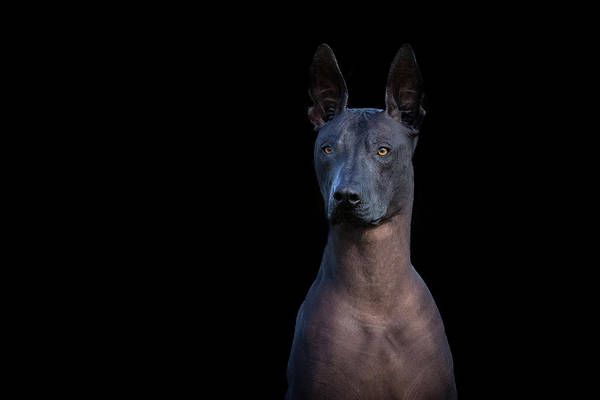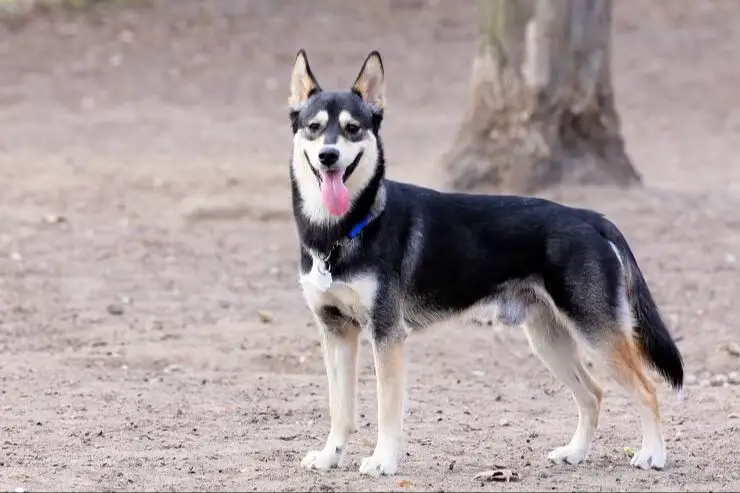Introduction
Mexico has one of the largest populations of street dogs in the world. It’s estimated that 70% of the 18 million domesticated dogs in Mexico are strays with no owner https://www.mexperience.com/street-dogs-and-dog-ownership-trends-in-mexico/. This large population of street dogs comes from a mix of factors like accidental breeding, abandonment, and lack of spaying/neutering. While some view street dogs as a nuisance, many locals have embraced them as part of the culture. This article will provide an overview of some of the most common street dog breeds found roaming around Mexico.
Xoloitzcuintli

The Xoloitzcuintli (pronounced “show-low-eats-queen-tlee”) is one of the oldest dog breeds in the Americas.[1] Often referred to as the Mexican hairless dog, this breed originated with the Aztecs and has a history dating back over 3,500 years. In Aztec mythology, the god Xolotl was depicted as a hairless canine that guarded the underworld. This is how the breed got its name, which combines “Xolotl” and “itzcuintli”, the Aztec word for dog.
Archaeological evidence shows that the hairless Xoloitzcuintli was a revered companion of Aztec nobility. The breed was viewed as a sacred dog and healer, thought to safeguard the homes of their owners and guide spirits to the afterlife. The hairless variety was more prized than the coated Xoloitzcuintli. When Spanish conquistadors arrived in the 1500s, they nearly caused the extinction of the Xolo due to beliefs that the dogs had mystical powers. Today, the Xoloitzcuintli remains the national dog of Mexico.
[1] “Xoloitzcuintli History: From Death to Resurrection.” American Kennel Club, 28 Sept. 2020, www.akc.org/expert-advice/dog-breeds/xoloitzcuintli-history-behind-the-breed/. Accessed 1 Mar. 2023.
Chihuahua:
Native to the Mexican state of Chihuahua, the Chihuahua is one of Mexico’s most iconic dog breeds. Some experts believe the Chihuahua is descended from the Techichi, a companion dog favored by the ancient Toltec civilization in Mexico. It was developed into a small version for ease of care and transport. Today, the Chihuahua is one of the most popular dog breeds in Mexico and around the world. Chihuahuas are the tiniest dogs and often weigh less than 6 pounds. They are sassy, alert, and lively little dogs that form very strong bonds with their owners. Chihuahuas can come in a smooth or long-coat, and range from a variety of colors and patterns including fawn, black, white, red, and tan. They are typically independent, confident and bold dogs that may be small but have huge personalities. The Chihuahua is fiercely loyal to its family and makes for a loving and protective companion.
Mexican Hairless Dog
The Mexican Hairless Dog, also known as Xoloitzcuintli or Xolo, is a unique, ancient breed of hairless dog that originated in Mexico. According to the American Kennel Club, archaeological evidence shows Xolos existed as far back as 3000 years ago. They were revered by the Aztecs and thought to be guides for souls traveling to the afterlife [1]. Today, Xolos come in three sizes – toy, miniature, and standard – and can be completely hairless or have some coat. While Xolos make devoted companions, their hairless bodies require extra care and sunscreen when outdoors.
Terrier Mixes
Some common terrier breeds mixed with Mexican street dogs include Chihuahuas, Jack Russells, Fox Terriers, and Rat Terriers. Chihuahua-terrier mixes like the Jack Chi are quite popular, combining the spirited nature of terriers with the loyalty and compact size of the Chihuahua.

Rat and Fox terriers contribute an energetic, lively personality to mixed breed dogs. Their alert, inquisitive nature makes terrier mixes very attentive and quick to respond to their surroundings. The tenacious temperament of terriers can make these crosses highly driven, as well as excellent watch dogs. They typically have short, low-maintenance coats and lean muscle that adds to their athletic look.
Some challenges with terrier mixes can be high energy levels and prey drive towards smaller animals. Early socialization and training is advised to temper their feisty attitude. When provided enough activity and mental stimulation, terrier crosses can make playful, loyal pets.
Shepherd Mixes
Some of the most common shepherd mixes seen roaming the streets in Mexico are German Shepherd and Belgian Malinois crosses. These intelligent and loyal dogs are often mixed with other breeds due to their popularity.
One German Shepherd crossbreed seen frequently is the Pastor Mexicano, or Mexican Shepherd, which is a mix between a German Shepherd and a native Mexican mutt. These athletic dogs were originally bred to herd livestock but make loyal companions. They have erect ears, a long muzzle, and a thick double-coat that can come in various colors including black, brown, tan, and white [1].
The Belgian Malinois is sometimes crossed with Labrador Retrievers or Boxers. These energetic Belgian Malinois mixes are highly intelligent and eager to please. They are lighter in frame than German Shepherd crosses but have similarly strong protective instincts and herding abilities [2].
Siberian Husky Mixes
Originating from northern Mexico, Husky mixes are some of the most popular breeds of street dogs. These breeds are a cross between Siberian Huskies and other native Mexican breeds, resulting in a hardy dog that is known for endurance, high energy, and a thick coat that can handle the varying climates in Mexico.

The most well-known Husky mix from Mexico is the Mexican husky, which is a cross between a Siberian Husky and the Xoloitzcuintli or Mexican hairless dog. These dogs have the lovable temperament of a Husky combined with the heat tolerance of a hairless breed that is adapted to Mexico’s climate. They make excellent guard and working dogs. According to one source, they are known for their sweet, calm demeanor. (1)
Other common Husky mixes include the Alaskan Husky, which is not a purebred dog but rather a type of dog used in sled racing. Crosses with German Shepherds and Pomeranians are also popular. These dogs can vary greatly in appearance with some appearing more Husky-like while others favor the other parent breed.
Sources:
(1) https://www.pinterest.com/pin/this-is-foxilobo-our-rescued-mexican-wolfhusky-mix-she-was-the-sweetest-most-ladylike-and-loving-dog-ever-she-lived-16-ye–224828206370950631/
Pit Bull & Bulldog Mixes
Tenacious and sturdy mixes, pit bull and bulldog crosses are some of the most common breeds wandering the streets of Mexico. The Mexican Pitbull, also known as the Chamuco, is a popular mix between the American Pit Bull Terrier and local Mexican stray dogs. These feisty yet affectionate dogs tend to be small, usually under 25 pounds, with a lean, muscular build. They can make great family companions but need an experienced owner.
Other common pit bull mixes include the Bullboxer Pit (American Pit Bull Terrier and Boxer mix), American Bulldog mixes, and various English and French Bulldog crosses. These sturdy, compact dogs are well-suited for life on the streets thanks to their bull-baiting history. However, they can be aggressive towards other animals if not properly socialized. With the right upbringing though, bully breed mixes generally make loyal pets.
Miscellaneous Mutts
Some of the most fascinating Mexican street dogs are those without an obvious categorization. They may have the scruffy coat of a terrier, the spots of a Dalmatian, the tail of a Husky, and the short legs of a Dachshund! These dogs showcase a diverse blend of breeds that have intermingled over the years.

According to The Mexican Street Dog – saaribampo, the Mexican street dog carries an “ocean of genes, swirling currents mixing morphological characteristics” of many popular breeds. Due to the lack of restrictive breeding practices, Mexican street dogs exhibit a remarkably wide spectrum of physical traits.
Some miscellaneous mutts have a truly unique appearance not fitting into any distinct category. Their one-of-a-kind look is a testament to the genetic diversity of street dogs allowed to freely intermingle. While their lineage may be uncertain, these fascinating mutts are sure to have charming, adaptable personalities.
Conclusion
After looking at some of the most common street dog breeds found in Mexico, it’s clear that there is a wide range of genetic backgrounds and mixes present. Some retain characteristics of established breeds like the Xoloitzcuintli or Chihuahua, while most are nondescript multigenerational mutts.
The terrier, shepherd, husky, pit bull, and bulldog influences seen in many street dogs likely come from breeds that have attained popularity at various times. The adaptability of these intelligent working dogs has served the free-roaming street dog population well.
While their backgrounds may be uncertain, Mexican street dogs display remarkable resilience, resourcefulness, and independence. Life on the streets shapes both the appearance and temperament of these dogs. Their diversity and uniqueness is part of what makes the street dogs of Mexico so iconic and endearing.
